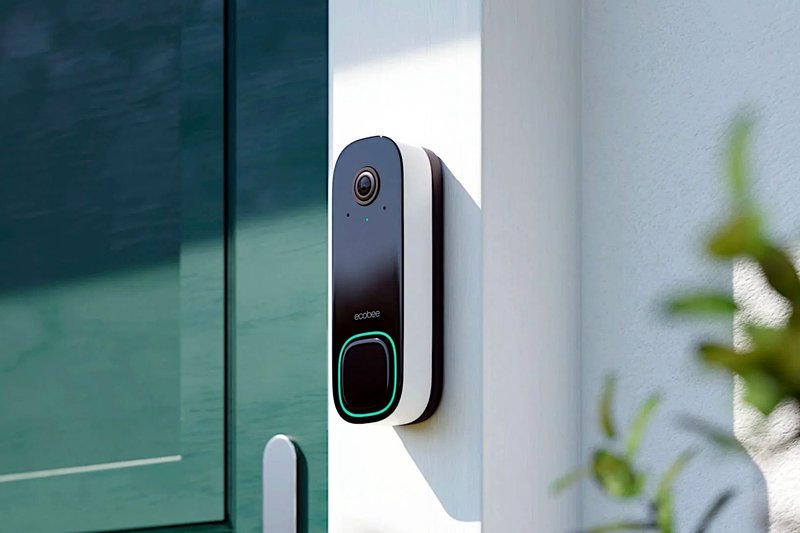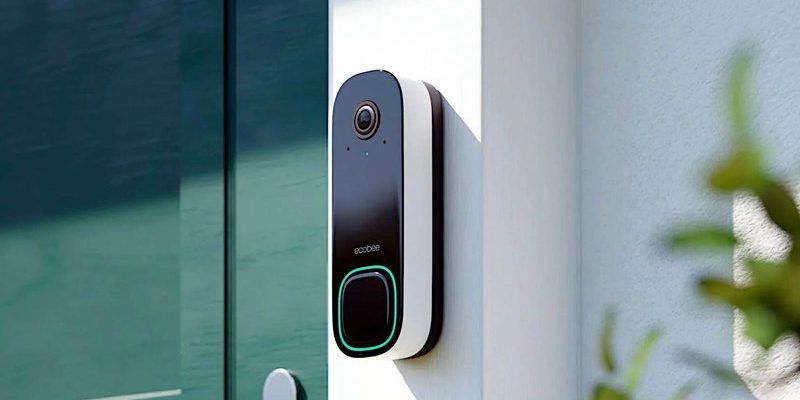
Ecobee makes popular smart thermostats and accessories, including their Smart Sensor (sometimes called Smart Remote). If you’ve gotten used to controlling the temperature with your phone or voice, wrangling a separate remote might seem old school. But honestly, sometimes “old school” is the most guest-friendly solution. Now the big question: can you set up the Ecobee Smart Remote to be simple for guests—without giving away control over the whole system?
What Is the Ecobee Smart Remote and How Does It Work?
Let me explain the basics before we dig into guest features. The Ecobee Smart Remote, often called the Smart Sensor, isn’t your classic TV-style clicker. It’s a small, wireless device you place in a room. Its job? To track the temperature and whether someone’s actually there. The thermostat uses this info to keep your home comfortable only where it matters. This sensor “talks” to the main thermostat (like the Ecobee SmartThermostat with voice control) through a secure wireless sync.
Here’s the thing: the sensor does *not* have buttons, a touchscreen, or any direct controls. It’s like a silent partner. Your guests can’t actually “set” the temperature from it—at least, not directly. If you were picturing a handheld remote to pass to guests, this isn’t quite it. Instead, the Ecobee Smart Remote acts as an extra set of eyes and ears, helping the thermostat decide which rooms are comfy and which ones can chill (literally).
If your remote sensor is working (and showing up under your thermostat’s settings), it means it’s paired and transmitting info. If you run into trouble—such as a sensor not showing up or showing a low battery—Ecobee provides easy ways to reset, replace the battery, or re-sync using the app.
Does Ecobee Have a Guest Mode?
This is where things get interesting. Ecobee, unlike some universal remotes or smart home hubs, doesn’t have a dedicated “Guest Mode” for its sensors or even for the thermostat itself. You can’t switch into a locked-down, simplified interface with a single tap. There’s no option in the app labeled “Guest” that gives limited access or special codes for visitors—a little disappointing, honestly.
What Ecobee *does* offer is flexible scheduling and access via the Ecobee app or website. If you want to give a guest access, you’d need to either let them use your device (with the app) or adjust the temperature for them. There’s no built-in way for a guest to control the system using the Smart Remote alone, since it doesn’t have controls.
You might be wondering if there’s any trick or backdoor to set up guest access (like other brands sometimes offer). Ecobee is pretty strict about privacy and security. Only those with your Ecobee account info can adjust settings or see data. So, if you want to limit what guests can do, you’re in luck—no risk of someone accidentally resetting your system or messing up advanced programming.
How Can Guests Adjust the Temperature With Ecobee?
If you’ve got guests who want to change the temperature, here’s what you need to know. The Ecobee Smart Remote won’t let them do it directly. However, the *main* thermostat unit—mounted on the wall—*will*. Guests can usually tap the screen to raise or lower the temperature, just like a regular thermostat.
That means, in practice, your home is as guest-friendly as a typical house (as long as guests can find the thermostat). If you want to make life super simple, leave a little sticky note or instructions near the thermostat explaining what to tap. If you’re extra tech-savvy and trust your guests, you could temporarily log them into the Ecobee app or set a manual hold before they arrive. Just remember to reset things back when they leave, so your regular schedule isn’t left in limbo.
Since the Smart Remote acts as a presence detector, it’ll still help make sure the room your guests are in stays comfy. But it won’t give them any way to override schedules or settings. That can be an advantage if you want to keep things consistent—no risk of someone turning the heat up to 85°F by accident.
Ecobee Smart Remote: Troubleshooting for Guest Use
Imagine this: your guests are here, but the room with the Smart Remote feels too hot or too cold. You check your app and realize the sensor isn’t working right. Don’t panic! Here are a few steps to troubleshoot Ecobee Smart Remote issues, whether you’re prepping for guests or in the middle of hosting.
- Check the sensor battery: If the app says “sensor offline” or you don’t see recent readings, the battery might be dead. These run on standard coin-cell batteries—easy to swap, which is handy if you know in advance.
- Reset and re-pair: If replacing the battery doesn’t help, try resetting the sensor. Hold the button on the back, wait for the light to flash, then use your Ecobee app to re-sync it. Pairing only takes a few minutes if you follow the on-screen steps.
- Placement matters: If your guests are hanging out in a room without a sensor, the thermostat won’t “see” them there. Move your Smart Remote to wherever your guests are sleeping or spending time.
- Manual override: Remember, if all else fails, you can always adjust the temperature manually at the main unit. It’s not as futuristic, but sometimes the old way just works.
You might feel like you need an IT certification to fix these things, but honestly, Ecobee’s system is pretty plug-and-play. The hardest part is remembering where you hid the extra batteries.
Comparing Ecobee Smart Remote to Universal Remotes
You might be thinking: why not just use a universal remote? It sounds tempting, but the comparison doesn’t quite hold up. Here’s the difference: universal remotes are usually for TVs, soundbars, or sometimes even lights—devices that use infrared codes you can “teach” or program. Ecobee’s Smart Remote isn’t sending “commands.” Instead, it’s passively collecting room data and transmitting it wirelessly to the thermostat.
If you want something that guests can hold and use to actually control the temperature—like a hotel room remote—Ecobee doesn’t currently offer that. No button-press, channel-changing fun. The closest you’ll get is letting guests use the wall-mounted thermostat or your phone app (with caution). Other brands don’t really do this either, though a few third-party smart home platforms let you build simple guest dashboards.
So, if your dream is to hand Grandma a remote so she can blast the heat at midnight, Ecobee’s not the brand for that style of control. Still, the passive “set-and-forget” comfort works well once you get the hang of it.
Advanced Tips: Making Ecobee Friendlier for Guests
Even without a true “Guest Mode,” there are ways to make your Ecobee setup less intimidating and more welcoming for visitors. Honestly, a little planning goes a long way.
- Leave simple instructions: It sounds silly, but a notecard by the thermostat or in your guest room with a step-by-step—”Touch screen, swipe left/right for temp”—makes a difference.
- Set up smart home routines: If you use Alexa, Google, or Apple HomeKit with Ecobee, consider adding basic voice commands. “Alexa, set guest room to 72.” Just make sure your guests know the trigger words.
- Pre-set comfortable ranges: Before guests arrive, use Ecobee’s “Comfort Settings” to make sure the rooms they’ll use will be heated or cooled as needed. Then, all they’ll need to do is show up and relax.
- Temporary holds: Use the thermostat’s “Hold” function to lock in a specific temperature for the length of their stay. That way, even if they fiddle, it’ll return to normal after they leave.
It’s not quite a magic button, but it’s the next best thing. And it beats fielding midnight calls about “how to turn off the fan.”
Security and Privacy with Ecobee Guest Use
Handing over control of your home systems can feel risky. You don’t want a well-meaning guest accidentally poking around your schedules or personal info. The good news is Ecobee keeps things pretty locked down. Unless someone has your Ecobee login, they can’t access settings from their own device.
Here’s the key: every action through the app or website requires your account info. The Smart Remote itself never contains sensitive data, so you don’t have to worry about someone resetting your whole system from the guest room. If privacy is a concern, you can always review your device history (if you’re especially cautious), but for most houses, the built-in security is more than enough.
If you ever feel uneasy, you can unpair or reset sensors, clear temporary holds, and even change your account password after guests depart. It’s all designed to give you peace of mind—so you can focus on actual hosting, not tech support.
Alternatives to Ecobee for Guest-Friendly Remote Control
If having a physical remote for guest control is your top priority, it’s fair to ask if another brand does it better. At the moment, most major smart thermostat brands (like Nest, Honeywell, or Emerson Sensi) follow a similar pattern. Their “remotes” are mostly apps, sensors, or wall units. A few third-party systems let you build custom scenes or panels, but these tend to be overkill for a simple guest visit.
Some universal IR remotes can be paired with mini split ACs or traditional HVACs. If all you want is a dead-simple, button-based solution, consider adding a basic, old-school thermostat in guest areas or using smart assistants for voice control. For most users, though, Ecobee’s combination of remote sensors, scheduling, and manual override hits that sweet spot between convenience and control.
Think of Ecobee as a smart co-pilot: it does most of the work in the background, but you (or your guests) can always take the wheel when needed.
Final Thoughts: Can Ecobee Smart Remote Be Used In Guest Mode?
So, can the Ecobee Smart Remote be used in Guest Mode? Not exactly—at least not in the “hand them a remote” sense. Ecobee’s sensors quietly help the thermostat make better decisions, but they don’t hand any direct control to guests. For most households, that’s actually a good thing: no accidental resets, no confusing codes, just a cozy home.
The trick is prepping your system and your guests. Make sure sensors are in the right spots, batteries are fresh, and your main thermostat is easy to use. If you want to be extra considerate, set up clear instructions or temporary holds to keep everyone comfortable.
Smart homes can feel intimidating, but with a couple of tweaks, Ecobee keeps things friendly for both hosts and visitors—even if “Guest Mode” isn’t an official feature.
